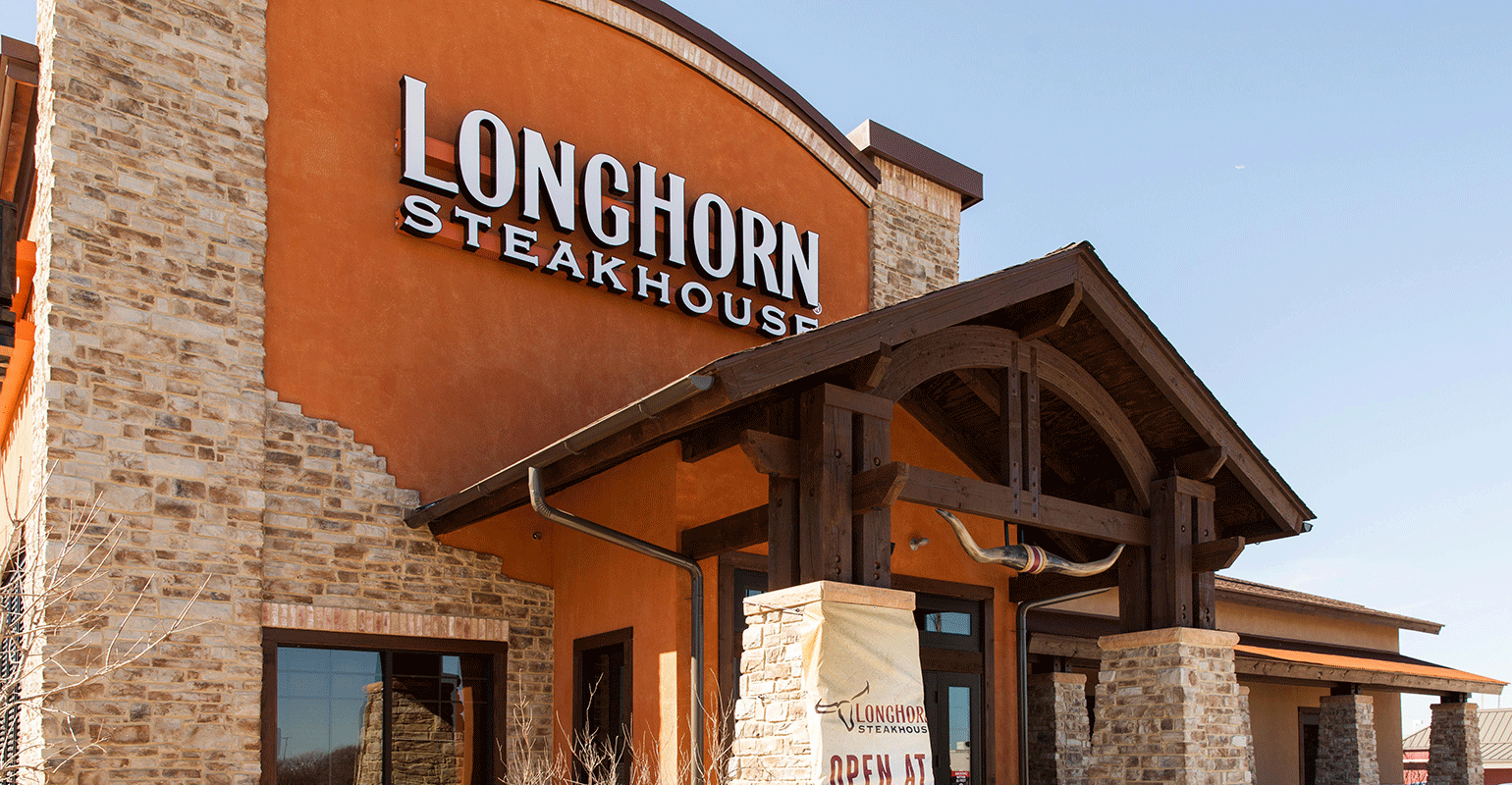 Todd Burrowes, president of Darden Restaurant Inc.’s LongHorn Steakhouse division, has been riding herd on the now-507-unit brand since July 2015, and in three years grown its unit count, geographic reach and sales.
Todd Burrowes, president of Darden Restaurant Inc.’s LongHorn Steakhouse division, has been riding herd on the now-507-unit brand since July 2015, and in three years grown its unit count, geographic reach and sales.
Burrowes, 55, joined the casual-dining steakhouse chain in 2002 as a regional manager and later worked as regional vice president and in 2008 was promoted to executive vice president of operations. He left for two years to serve as president and chief operations officer for the Ruby Tuesday casual-dining brand and returned to LongHorn as president in July 2015, when it had 470 locations.
The LongHorn division now has more than 30,000 employees and posted $1.7 billion in annual sales for fiscal 2018, which ended May 27, up from $1.6 billion in the prior fiscal year.
Same-store sales in the fiscal year increased 2.4 percent for LongHorn, slightly ahead of the 2.2 percent increase for Darden’s legacy brands.
Burrowes spoke with Nation’s Restaurant News about the success of the LongHorn brand and his management style:
What was your first job in the restaurant business?
My first job was at Burger King. When I was 15 and 16, I loved the food at Burger King. I was interested in cooking. This was an entry level opportunity, and I had some friends who were working there, and they referred me. I worked in the heart of the house: the kitchen.

Todd Burrowes says effective leadership should communicate a company’s vision “over and over and over again.” He also slowed LongHorn’s growth rate, warning that “speed can kill.”
What did that first job teach you?
It taught me structure, and it taught me skills. The structure you get in the restaurant industry is impressive. It also teaches personal accountability. My job allowed me to have purpose for the work I was doing, and it created a team spirit.
How has that translated to your role at LongHorn?
I’ve spent a lifetime in the restaurant business, but I really don’t consider it a traditional workplace. I say we’re in the “Happiness Business.” People come in because they are hungry, but it’s the joy people share in their time together.
How do you create a successful culture?
It begins with who you hire and why. At LongHorn, we hired for the qualities we can’t teach. We can’t teach energy. We can’t teach personality. And we can’t teach having a servant’s heart. Those who really get joy out of serving others. It begins with making sure you hire individuals that have the same beliefs you do. Then it’s great training and retaining your team by listening to them and making changes based on what they think and feel.
How have you seen training change through the years?
The basics of training have remained the same. We still teach the technical part of the job, but we also teach the culture, mainly through storytelling and through living it. As of late, we’re seeing a lot of technology impact how we train.
What’s the best piece of advice you ever got?
It’s that leaders define reality and create a vision.

Who shared that with you?
That would be Gene Lee [now president and CEO of Darden Restaurants Inc.]. It was in the context when I joined Rare [Hospitality International] in 2002. At the end of my training, he sat down with me and David George [now chief operating officer for Darden] and shared that bit of wisdom. I think about that and try to live it each and every day.
What’s behind it?
People want to know where they stand. They want to know where the company stands. They want to understand reality. And really effective leaders create a compelling vision that gives people hope, which is really an expectation that better things will happen in the future. More importantly, they understand the work that they do — why it is important and the purpose of it. Successful leaders communicate this vision over and over and over again. The simpler it is, the more powerful it will be.
You worked for LongHorn for 10 years and left for two years to head Ruby Tuesday Inc. What was the difference when you returned?
We had lost our grasp of our competitive advantage and keeping those top of mind. And, quite frankly, we had grown a little bit too fast. In the two years I was gone, we opened close to 60 restaurants. That’s a big burden for a restaurant brand to handle. Part of what we wanted to do was look at our business, define reality and say, “Alright, let’s take the best of our past and the best of our present and create a really compelling vision anchored in our heritage.” And that’s what we set out to do as a team three years ago. We’ve been working that plan ever since.

You slowed the growth rate. What did that do for the brand?
It gave us the opportunity to strengthen our culture. We have a phrase here, when we talk about new-restaurant growth: “Speed can kill.” It’s a wonderful for thing for the business to continue to grow, but if it grows too fast, it’s really about the human resource piece. It was taking good people to open new restaurants. It allowed us to slow down and create a really strong strategy and to focus on the strategy.
What is the strategy for LongHorn?
We talk about it in three words: quality, simplicity and culture. It’s to increase the quality of the guest experience for food, service and atmosphere. It’s to leverage our simple operating model, which allows us to hone our levels of execution. And [with] culture, it is leveraging it to a higher level of engagement.
Given your background in training, how do you approach that at LongHorn?
Training is critical to us at LongHorn and Darden. We have a phrase: The cultures of companies are measured by how you treat someone on the first day and how you treat them on the last day. … We want to make sure the first day is extraordinary.
What tools do you use?
We make sure the managing partner, the leader of the business, sits down with them on their first day, not just reviewing what they are to do but listening and learning more about the individual to make our folks feel valued from Day One. We do the same thing with our restaurant managers. The managers come to our restaurant support center for a week, and I meet with all of them.
What’s your top professional challenge?
For me, the ultimate challenge — and the fun in this job — is to picture this little town of 30,000 individuals and trying make sure we are all in the same boat, in the same ocean, rowing the same way to the same destination. And we all believe in the same destination.
Meet all of the 2018 Golden Chain winners
Contact Ron Ruggless at [email protected]
Follow him on Twitter: @RonRuggless
Correction Sept. 27, 2018: This story has been edited to correct the number of restaurants opened during the two years Burrowes was away from the brand.





